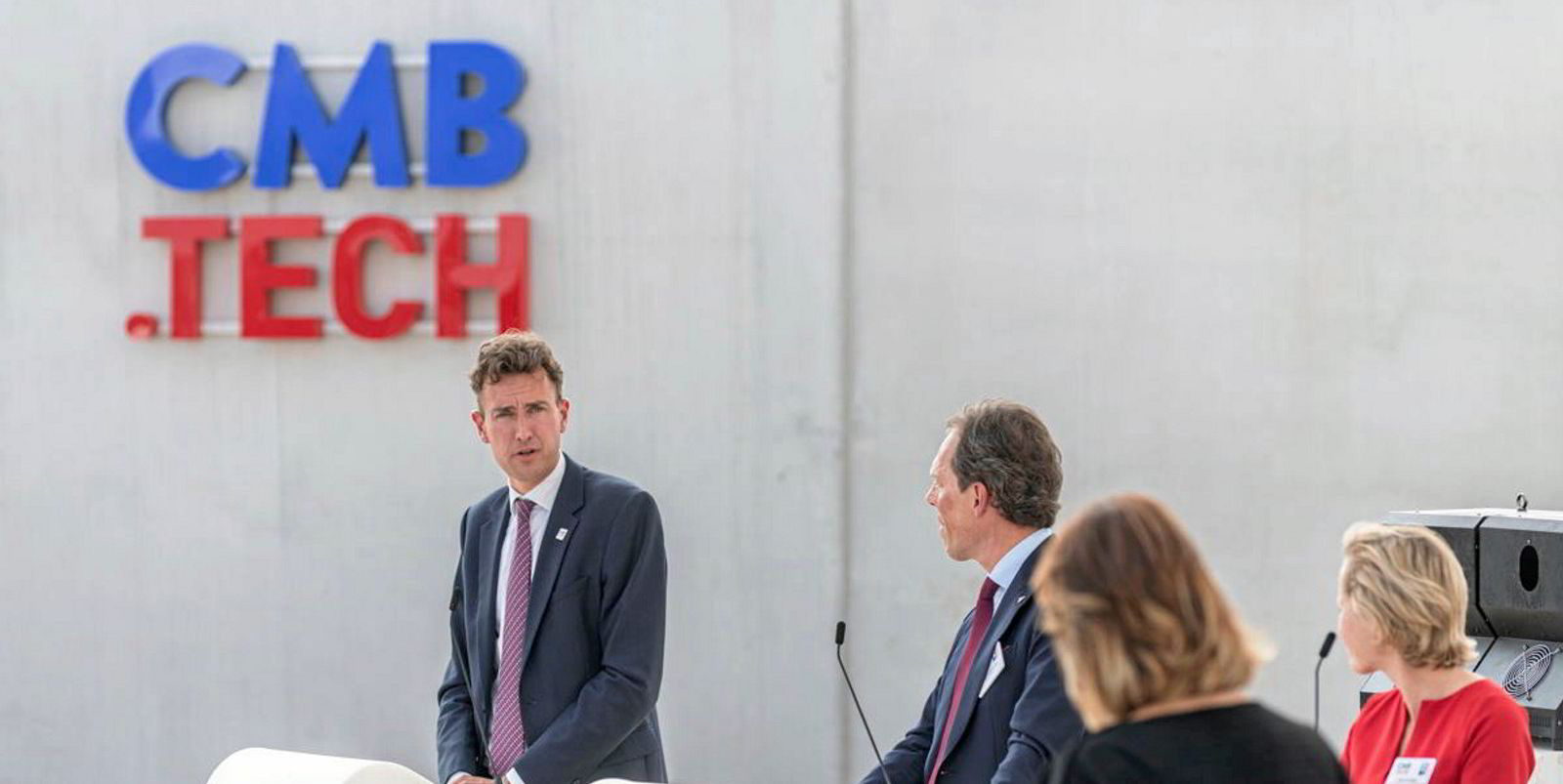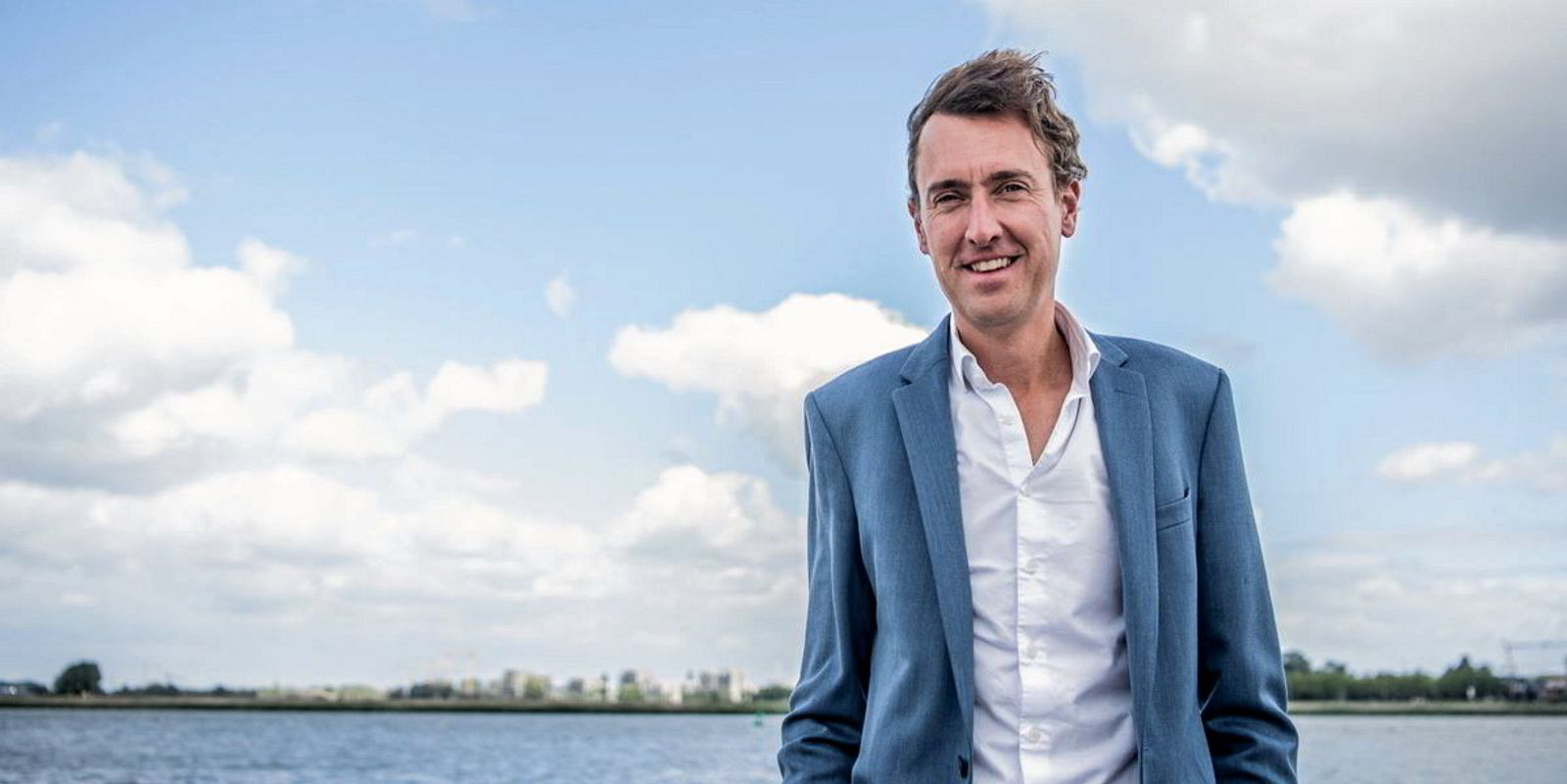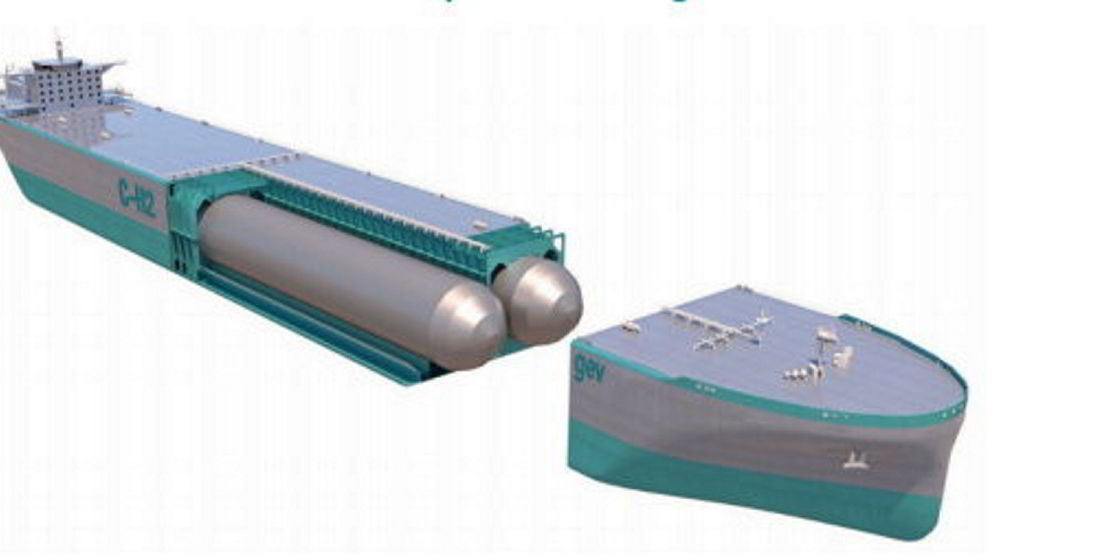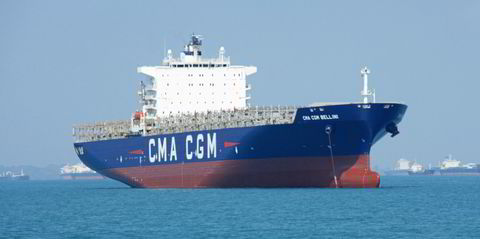Belgian shipping giant Compagnie Maritime Belge (CMB) plans to build a series hydrogen refuelling stations targeting shipping activities at ports throughout northern Europe, according to chief executive Alexander Saverys.
The first station was unveiled at its home port of Antwerp on 3 June.
The facility will be used to refuel a number of hydrogen-fuelled craft including crew transfer vessels (CTVs), tugs and small passenger craft that CMB is planning to operate.
Saverys describes the new refuelling centre as “the first [hydrogen] refuelling station on the planet” and expects that more will follow.
“Obviously we hope that we’ll build more of these marine refuelling stations in the near future,” he said.
He added that CMB would look to build a network of stations in France, Belgium, Holland, Germany and the UK.
Leverage on a hydrogen network
CMB will leverage the network it has acquired through recent acquisitions to help scale up the production of hydrogen.
That includes Windcat Workboats, a Dutch and UK-based CTV business that the Belgian company acquired in December in a deal worth around $72.4m.
The Lowestoft and IJmuiden headquartered company is building four hydrogen-fuelled CTVs to be delivered in the coming months.

These will eventually help to scale up CMB’s hydrogen refuelling business.
“Shipping can really accelerate the deployment of hydrogen refuelling stations, because [of] the sheer volume that we need,” Saverys said.
Since 2017, CMB has operated the hydrogen-powered, 13-passenger Hydroville. Its dual-fuel, hydrogen combustion engines have until now been supplied with hydrogen by a truck known as a tube trailer. The vessel will now be able to use the marine refuelling station in Antwerp.
The station will also be used to supply the HydroTug, the world’s first hydrogen-powered tugboat, which is scheduled for delivery soon to CMB.
The company is also slated to take delivery of the Hydrocat, which is its first hydrogen-powered CTV.
Just three CTVs, or a single tug vessel, are sufficient to justify building a single 1-MW refuelling station, Saverys said.
Trend to decarbonise quickens
Saverys conceded that there is some way to go before the price of fossil fuels and zero carbon fuels are at parity.
But he believes the economics of green hydrogen will become increasingly competitive as more large factories produce hydrogen.
In the interim period, blue hydrogen derived from natural gas could be used.
CMB is investing heavily in the development of low-carbon and zero-carbon ships and engines through a division called CMB.Tech.
The division has teamed up to develop a 1-MW dual-fuel engine as part of the BeHydro joint venture with engine maker Anglo Belgian Corp.
CMB has benefited from growing interest in zero-carbon fuels as it begun working on hydrogen solutions five years ago, said Saverys.
“I don’t think Covid has fundamentally changed anything, but it has accelerated some trends," he said. "And the trend to decarbonise has clearly accelerated.”
While the focus is on the European hydrogen market, the company is growing its involvement in Asia.
In April, CMB revealed plans to develop a hydrogen internal combustion engine for the Japanese industrial and marine market in partnership with Tsuneishi Shipbuilding.






